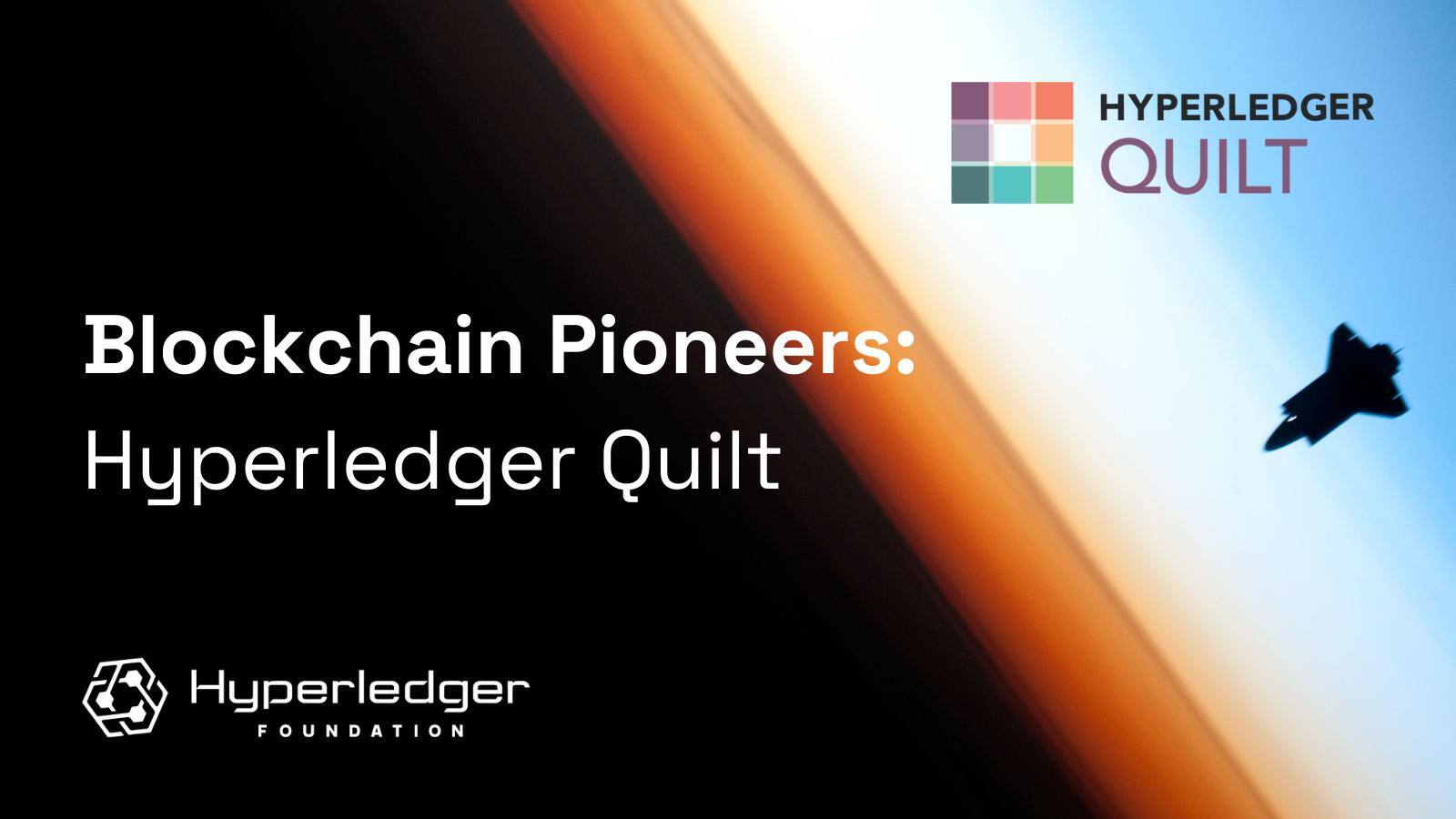Blockchain Pioneers: Hyperledger Quilt

As we laid out in our Helping a Community Grow by Pruning Inactive Projects post, there is an important life cycle to well governed open source projects. Since our launch in 2015, Hyperledger Foundation has hosted a number of now archived projects that helped drive innovation and advanced the development of enterprise-grade blockchain technologies. This series will look back at the impact of these pioneering projects.
Hyperledger Quilt, a Java implementation of the Interledger protocol, is next up in the series.
History
Hyperledger Quilt began in 2017 as a unique and innovative endeavor in the realm of blockchain technology that aimed to enable seamless transactions across different payment networks. Despite its innovative features, Hyperledger Quilt did not achieve widespread adoption and was eventually moved to archived status. This post explores the innovative aspects of Hyperledger Quilt as well as some of the barriers to its adoption.
Innovation in Hyperledger Quilt
Hyperledger Quilt brought several innovative features to the table. First, it was an implementation of the Interledger Protocol, a protocol designed to facilitate transactions across any payment network, whether fiat or crypto. Hyperledger Quilt was a stepping stone towards the creation of a universal payment network.
Hyperledger Quilt was hosted within the Hyperledger community, which provided a robust governance structure. This open-source approach encouraged collaboration and ensured that no single entity had control over the Java implementation of the Interledger Protocol.
Finally, Hyperledger Quilt was built on Java, a widely-used programming language. This made it accessible to a large number of developers and provided them with easy-to-use libraries for sending and receiving Interledger payments.
Challenges and Lack of Adoption
Despite these innovative features, Hyperledger Quilt did not gain the expected level of adoption. One reason was the lack of active maintainers. Open source projects rely heavily on their community for development and maintenance and, if the project contributors are not active or large enough, the project can stagnate.
Since Quilt was an early project in the interop space, another potential factor was the emergence of other alternatives. The blockchain space is highly competitive, with new projects and technologies constantly emerging. Cross network interoperability has proven to be a critical component for advancing this market. Other projects have taken their own approach to interoperability. Over time, they have delivered performance, ease of use, or community support that drew more users than Hyperledger Quilt.
Finally, shifts in the strategic focus of the contributing organizations also played a role. The focus of the original maintainers shifted as organizations decided to allocate their resources elsewhere and that led to a decrease in the development and promotion of Hyperledger Quilt, affecting its adoption.
Legacy
Hyperledger Quilt early on demonstrated the importance of interoperability across enterprise-grade blockchain networks and paved the way for other similar projects that followed.
“The early adopters of the Interledger Protocol (ILP) played a crucial role in demonstrating its capability for seamless transactions across payment networks. Open source projects have the benefit of providing the building blocks for future organizations to promote the adoption and growth of protocols, often ahead of their time. The collective knowledge base built from work done by projects like Hyperledger Quilt is imperative to supporting developers within the Interledger ecosystem.” - Alex Lakatos, Interledger CTO
Hyperledger Cactus started in 2020 as an effort led by Accenture and Fujitsu to provide a singular framework to enable each of the networks to interoperate. Around that time IBM created a lab called Weaver that had a similar goal. In 2022, Cactus and Weaver combined to form the Hyperledger Cacti project. There have been other labs exploring interoperability as well, such as Harmonia and YUI. Work on interoperability is also happening within the projects that are focused on decentralized identity.
If you’re interested in exploring more about the latest developments in blockchain interoperability, please feel free to get involved with the projects and labs mentioned above. For more on how to use Cacti, check out the recording of this in-depth technical workshop on Hyperledger Cacti.
Conclusion
In conclusion, while Hyperledger Quilt brought several innovations to the blockchain space, as an early entrant to interoperability at Hyperledger, it faced challenges that hindered its adoption. Understanding these challenges can provide valuable insights for future projects in this rapidly evolving field. Despite its archived status, the legacy of Hyperledger Quilt as an innovative project striving for interoperability in payment networks continues to inspire. The Quilt code is still available for anyone who is interested in checking it out, but note that this is not being maintained and questions about it may not be answered.
We would like to thank all of the people who contributed to Hyperledger Quilt while it was an active project. This includes:
- The top five contributors, David Fuelling, Ian Simpson, Adrian Hope-Bailie, Neil Hartner, and Sudheesh Singanamalla, as well as the more than 25 other developers who made a contribution to the project.
